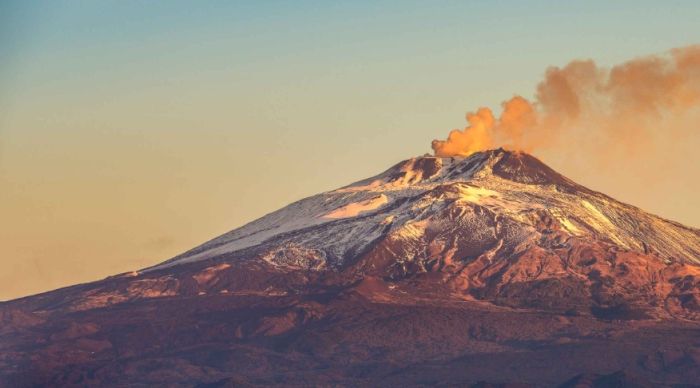Ready to explore Mount Etna? Discover everything about Europes most active Etna volcano - from thrilling hikes to safety tips and breathtaking views of this fiery Sicilian landmark!
Table of Contents
Historical Background and Geological Significance
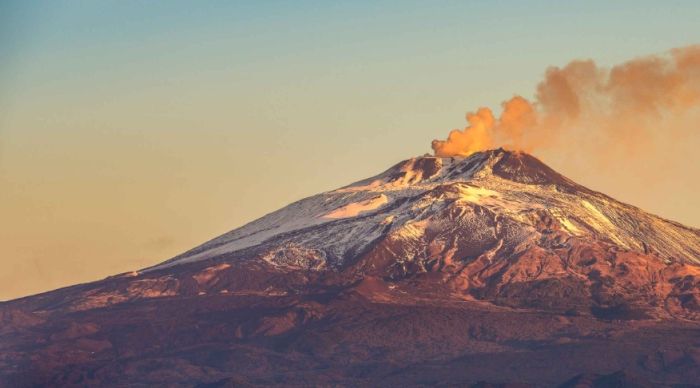
Mount Etna isnt just a volcano—its a living legend that has shaped Sicily for millennia. As a travel blogger obsessed with uncovering earths wonders, I was drawn to its fiery allure. Etnas story begins over 500,000 years ago, born from tectonic clashes beneath the Mediterranean. It stands today as Europes tallest active volcano, towering at about 3,350 meters, and is a UNESCO World Heritage site. Its eruptions have influenced everything from ancient myths to modern science, making it a potent symbol of natures untamed power in Sicilian culture.
Formation and Eruptive History
Etnas fiery birth involved centuries of lava flows building its iconic cone. Key moments include devastating eruptions in 1669 that destroyed villages and reshaped Catanias coastline, and more recent events like the fiery displays of 2001 and 2021 that captured global attention. Historically, the Greeks revered it as the forge of Hephaestus, while Romans documented its outbursts, integrating it local lore where its seen as both a protector and destroyer. Today, ongoing research by the Etna Observatory highlights its role in volcanic studies, with frequent minor eruptions adding layers to its ever-changing landscape.
Cultural Importance in Sicily
For Sicilians, Etna is woven daily life through folklore and festivals. Legends speak of giants buried beneath its slopes, and annual events like the SantAgata festival in Catania honor saints believed to protect against its wrath. Art and literature, from ancient pottery to modern novels, celebrate Etnas duality—beauty and danger. This cultural tapestry enriches visits, offering a glimpse how communities thrive alongside natures unpredictability, with local artisans crafting lava-stone souvenirs that embody resilience.
Planning Your Visit: Essential Practical Details
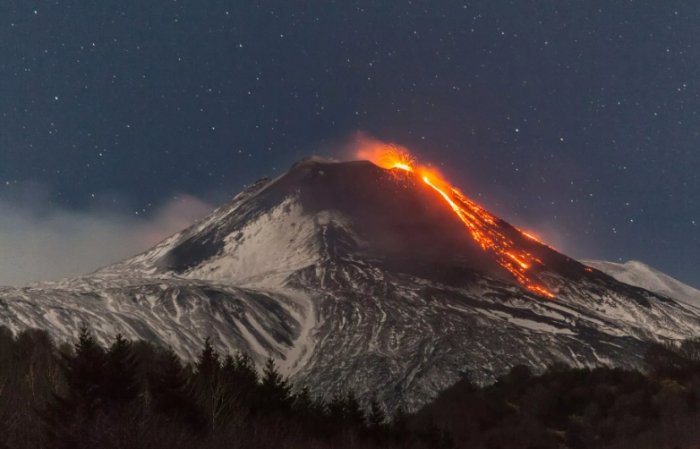
Organizing a trip to Mount Etna requires smart prep, and I learned firsthand from my recent escapade. The volcano is nestled in eastern Sicily, easily accessible from major hubs like Catania. Always check current conditions via the Etna Park Authoritys website since volcanic activity can affect access. Aim for a full-day visit to soak in its grandeur, starting early to avoid crowds and catch the best light for photos.
Location and Accessibility
Etna sprawls across a vast protected area, with key points like the Silvestri Craters and Rifugio Sapienza base camp. Access is centered on the southern slopes near Nicolosi or Zafferana Etnea, both charming towns with trailheads. From Catania airport (just 30 km away), hop on a taxi or ATAM bus route 4 for a scenic 1.5-hour ride to Rifugio Sapienza. Alternatively, rent a car for flexibility—its a 45-minute drive via the SP92 highway, offering stunning vistas en route. Guided shuttle services also operate from Taormina or Syracuse for multi-day tours.
Operating Hours and Admission Fees
Etnas park areas are open year-round, but access varies by season. Main visitor centers, like the Etna Nord or Sud entrances, operate daily from 9:00 AM to 5:00 PM in summer (June-August), and 9:00 AM to 4:00 PM in winter (December-February). Off-peak months see reduced hours due to weather. Ticket prices are straightforward: adults pay €35 for basic entry, children (6-12) €20, and under 6s enter free. This includes admission to lower craters and visitor centers. For higher elevations, add-ons like the cable car (Funivia) cost €30 round-trip, while guided summit tours start at €60. Buy tickets online or at kiosks to skip lines—I saved hassle by booking via Etnas official app.
Transportation Options
Getting around Etna demands planning. Public buses run infrequently, so I recommend the Funivia cable car from Rifugio Sapienza for a swift ascent to 2,500 meters—its a 15-minute ride with panoramic views. From there, 4x4 jeeps or hiking take you closer to the summit. Taxis and apps like Uber are reliable for short hops between towns, but for full exploration, rent a sturdy vehicle (around €50/day) to navigate winding roads. Peak-season crowds mean booking transport in advance; I used Etna Experience tours for seamless jeep safaris.
Best Times and Unforgettable Activities
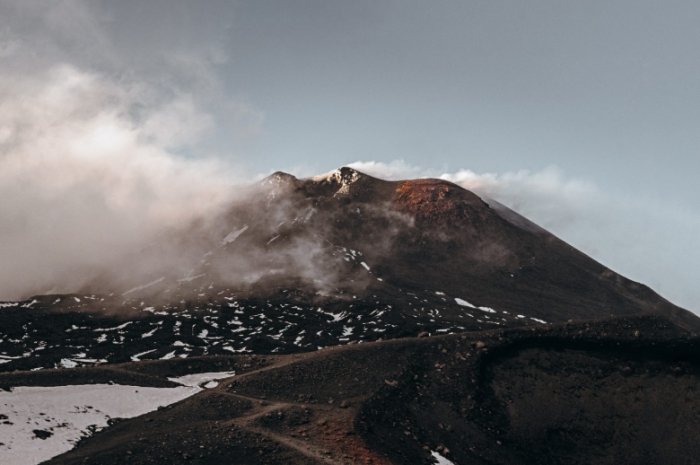
Timing is everything for experiencing Etnas magic. I visited in spring and felt the perfect blend of mild weather and vibrant scenery. The volcano offers year-round thrills, but choose wisely to avoid disappointment—summer heat can make hiking grueling, while winter snows block higher paths. Pack layers, sturdy boots, and a camera; youll capture surreal landscapes that feel otherworldly.
Optimal Seasons for Sightseeing
The sweet spot is April-June or September-October, when temperatures hover around 15-25°C (59-77°F) and skies are clear. Avoid July-August (crowded, highs of 30°C/86°F) and January-February (snowy, lows of -5°C/23°F). For eruption viewing, late autumn often brings increased activity, but consult local advisories—I lucked out with a minor steam vent display in October! Spring blooms paint the slopes in wildflowers, while autumn foliage adds drama—ideal for photographers seeking that "wow" shot.
Signature Tours and Adventures
Etnas guided tours are a must for safe, immersive fun. I adored the summit hike with Volcanological Guides—€75 for a half-day trek to active craters, complete with lava tube explorations. For thrill-seekers, cable car rides offer aerial views, while sunset jeep tours reveal glowing horizons. Family-friendly options include easy walks at Silvestri Craters (free entry zones). Seasonal highlights like summer stargazing events or winter snowshoeing add unique twists; book through operators like Etna Tribe for expert-led escapades.
Top Photography and Scenic Spots
Dont miss Belvedere viewpoint for sweeping vistas of the Valle del Bove canyon, or the Silvestri Craters for close-up lava formations. Sunrise at Rifugio Sapienza is magical, casting golden hues on the peak. Bring a wide-angle lens for landscapes and a zoom for wildlife like endemic birds. My favorite spot? Piano Provenzana on the north side for serene, less-trodden paths—perfect for quiet reflection amid lunar-like terrain.
Cultural Immersion: Local Flavors and Stays
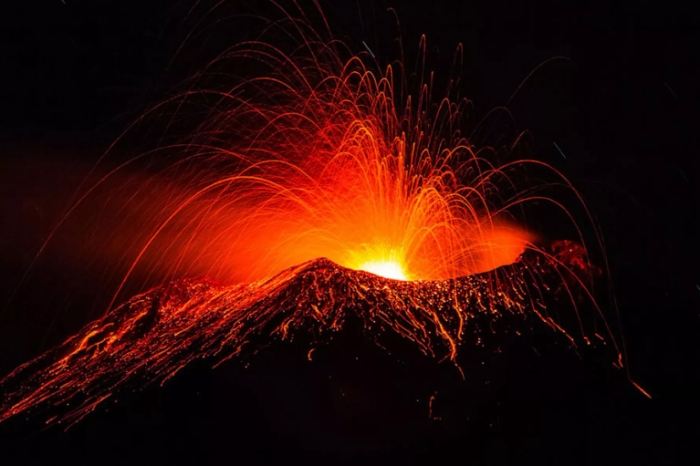
Sicilys soul shines through Etnas surroundings, blending rustic charm with culinary delights. I immersed myself in village life, discovering how volcanic soil enriches everything from wine to art. Etnas cultural vibe is warm and welcoming, with locals eager to share stories over espresso. After a day of adventure, unwinding in cozy agriturismos or savoring street food feels like a reward.
Sicilian Traditions and Festivals
Etnas eruptions inspire vibrant celebrations. In spring, the Almond Blossom Festival in Agrigento honors rebirth, while autumns Grape Harvest sees wine tastings in nearby vineyards. Local artisans craft lava-rock jewelry and ceramics—I picked up a handmade vase in Catanias markets. Etnas myths also feature in puppet shows and storytelling nights, offering a fun, interactive way to connect with history.
Accommodation Recommendations
Find your perfect base near Etna with these top picks, based on my stays and traveler reviews. Options cater to budgets and styles, ensuring comfort after action-packed days.
| Rank | Property Name | Location | Price (per night) | Highlights |
|---|---|---|---|---|
| 1 | Monaci delle Terre Nere | Zafferana Etnea | €150-€250 | Organic farm stay, volcano views |
| 2 | Hotel Corsaro | Nicolosi | €80-€120 | Budget-friendly, near cable car |
| 3 | Belvedere Rural Resort | Linguaglossa | €100-€180 | Family suites, wine tasting tours |
Book early, especially in peak season. I loved Monaci for its eco-luxury and fresh farm meals.
Culinary Delights to Savor
Sicilian cuisine thrives on Etnas bounty—think bold flavors from volcanic soil. Must-try dishes include pasta alla norma (eggplant pasta), arancini (fried rice balls), and cannoli for dessert. Pair meals with Etna DOC wines like Nerello Mascalese. I frequented Trattoria Da Nino in Catania for authentic feasts under €20. For picnic supplies, grab local cheese and olives from roadside markets—fuel for hikes!
Safety and Essential Tips
Volcanic adventures demand caution, but Etna is generally safe with smart prep. During my visit, I followed expert advice to avoid risks. Always monitor real-time alerts via the INGV (National Institute of Geophysics) app, as conditions shift rapidly. Etnas frequent rumblings add excitement but require respect—stick to marked trails and heed guide instructions.
Volcanic Activity Precautions
Etnas eruptions are often small, posing low risk to visitors if you stay in safe zones. Avoid summit areas during high alerts; instead, enjoy lower paths. Gas emissions can occur, so carry a mask for sulfur-heavy days. In case of tremors, move to open spaces—guides train for emergencies.
Preparation Checklist
Pack essentials like sturdy hiking boots, layered clothing (temperatures drop sharply at altitude), sunscreen, and plenty of water. Health-wise, altitude sickness is rare but possible—acclimate gradually. Respect park rules: no littering, and dont touch sensitive formations. I found a small first-aid kit invaluable for minor scrapes.
Q&A: Your Burning Questions Answered
As a traveler, Ive fielded tons of queries about Etna. Below, I tackle common concerns with clear, practical answers based on my experiences and reliable sources like the Etna Observatory.
1. When was Mount Etnas last major eruption?
Mount Etnas most recent major eruption occurred in December 2023. This event involved significant lava flows and ash plumes from the Southeast Crater, impacting nearby areas but causing minimal disruption to tourism. Eruptions like this are monitored closely, but theyre part of Etnas normal activity cycle.
2. Is it safe to visit Etna now?
Yes, its generally safe to visit Mount Etna as of now. The volcano is under constant surveillance, and authorities issue timely warnings if risks rise. Stick to guided tours in permitted zones—avoid restricted areas during minor eruptions. I felt secure on my trips by following s via the INGV website.
3. Is Mount Etna constantly erupting?
Technically, Mount Etna is one of the worlds most active volcanoes, but it doesnt erupt constantly. It experiences frequent small-scale activity like ash emissions or lava flows, often several times a year. These are usually minor and localized, allowing regular visits. Major eruptions are rarer but predictable through monitoring.
4. Has Mount Etna erupted in 2025?
No, as of the current date in 2024, Mount Etna has not erupted in 2025 since that year has not yet occurred. Predictions suggest continued activity, but eruptions are monitored in real-time. Always check reliable sources before planning a visit for the latest s.
About the author:I’m Frank, the traveler and foodie behind Italy Travel Guide. For over a decade, I’ve been exploring every corner of Italy—from the canals of Venice to the lemon groves of the Amalfi Coast—sharing the best hidden gems, authentic trattorias, and charming boutique hotels along the way. My passion? Helping you experience Italy like a local, whether that means finding the perfect tiramisu in Florence, navigating Italy’s train system like a pro, or uncovering that tiny family-run vineyard in Tuscany. Join me as we dive la dolce vita, one unforgettable adventure at a time!
